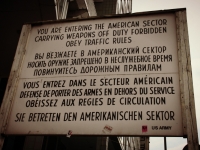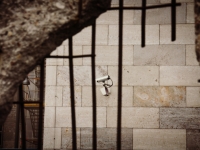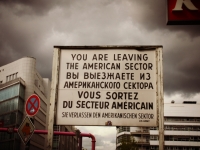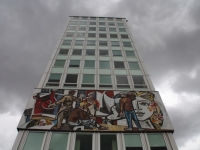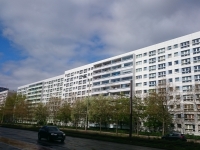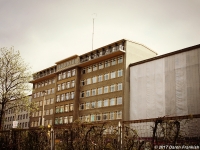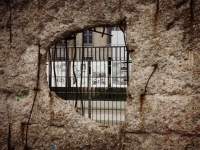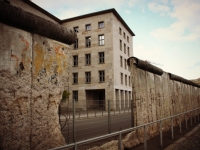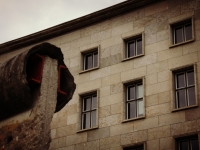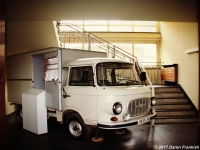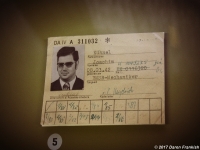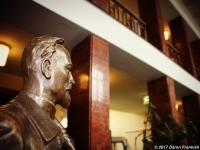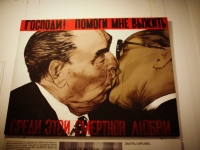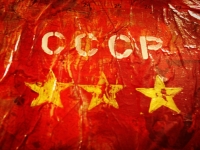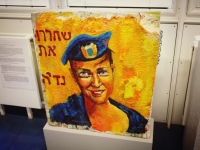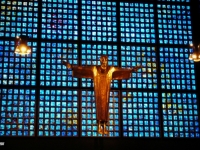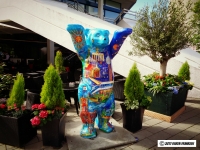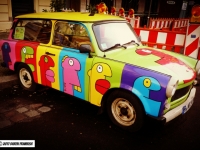Travel
The Key to the Cold War
Berlin
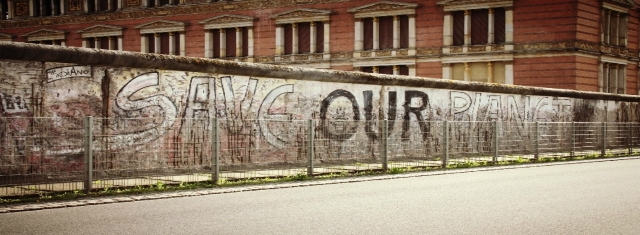
Berlin Wall (Source: © 2017 Daren Frankish)
USPA NEWS -
The Key to the Cold War. At the end of World War II, the main Allied powers“”the United States, France, United Kingdom, and the U.S.S.R (Union of Soviet Socialist Republics) “”divided Germany into two zones.
The Cold War was a state of geopolitical tension after World War II between powers in the Eastern Bloc (the Soviet Union and its satellite states) and powers in the Western Bloc (the United States, its NATO allies and others). Historians do not fully agree on the dates, but a common timeframe is the period (the second half of the 20th century) between 1947, the year the Truman Doctrine (a U.S. foreign policy pledging to aid nations threatened by Soviet expansionism) was announced, and 1991, the year the Soviet Union collapsed.
The Soviet Union occupied East Germany and installed a rigidly controlled communist state. The other three Allies shared the occupation of West Germany and helped rebuild the country as a capitalist democracy. The City of Berlin, located 200 miles inside East Germany, was also divided. Half of the city“”West Berlin“”was actually part of West Germany.
Many East Germans did not want to live in a communist country and crossed into West Berlin, where they could either settle or find transportation to West Germany and beyond. By 1961, four million East Germans had moved west. This exodus illustrated East Germans' dissatisfaction with their way of life, and posed an economic threat as well, since East Germany was losing its workers.
The Berlin Wall was a guarded concrete barrier that physically and ideologically divided Berlin from 1961 to 1989. Constructed by the German Democratic Republic (GDR, East Germany), starting on 13 August 1961, the Wall completely cut off (by land) West Berlin from surrounding East Germany. Its demolition officially began on 13 June 1990 and was completed in 1992. The barrier included guard towers placed along large concrete walls, which circumscribed a wide area (later known as the "death strip") that contained anti-vehicle trenches, "fakir beds" and other defenses.
There were nine border crossings between East and West Berlin. These allowed visits by West Berliners, other West Germans, Western foreigners and Allied personnel into East Berlin, as well as visits by GDR citizens and citizens of other socialist countries into West Berlin, provided that they held the necessary permits. These crossings were restricted according to which nationality was allowed to use it (East Germans, West Germans, West Berliners, other countries). The most famous was the vehicle and pedestrian checkpoint at the corner of Friedrichstraße and Zimmerstraße, also known as Checkpoint Charlie, which was restricted to Allied personnel and foreigners.
Two years after the construction of the Berlin Wall, President Kennedy paid a historic visit to Berlin to challenge Soviet oppression and offer hope to the people of the divided city. "Ich bin ein Berliner" ("I am a Berliner") is a quotation from a June 26, 1963, speech by U.S. President John F. Kennedy in West Berlin. Kennedy aimed to underline the support of the United States for West Germany.
The Eastern Bloc claimed that the Wall was erected to protect its population from fascist elements conspiring to prevent the "will of the people" in building a socialist state in East Germany. In practice, the Wall served to prevent the massive emigration and defection that had marked East Germany and the communist Eastern Bloc during the post-World War II period.
By the 1970s, both sides had become interested in making accommodations in order to create a more stable and predictable international system, inaugurating a period of détente that saw Strategic Arms Limitation Talks and the US opening relations with the People's Republic of China as a strategic counterweight to the Soviet Union. Détente collapsed at the end of the decade with the beginning of the Soviet““Afghan War in 1979. The early 1980s were another period of elevated tension, with the Soviet downing of Korean Air Lines Flight 007 (1983), and the "Able Archer" NATO military exercises (1983).
The United States increased diplomatic, military, and economic pressures on the Soviet Union, at a time when the communist state was already suffering from economic stagnation. In the mid-1980s, the new Soviet leader Mikhail Gorbachev introduced the liberalizing reforms of perestroika ("reorganization", 1987) and glasnost ("openness", c. 1985) and ended Soviet involvement in Afghanistan. Pressures for national independence grew stronger in Eastern Europe, especially Poland. Gorbachev meanwhile refused to use Soviet troops to bolster the faltering Warsaw Pact regimes as had occurred in the past.
The result in 1989 was a wave of revolutions that peacefully (with the exception of the Romanian Revolution) overthrew all of the communist regimes of Central and Eastern Europe. The Communist Party of the Soviet Union itself lost control and was banned following an abortive coup attempt in August 1991. This in turn led to the formal dissolution of the USSR in December 1991 and the collapse of communist regimes in other countries such as Mongolia, Cambodia and South Yemen. The United States remained as the world's only superpower.
Following German reunification in 1990, Berlin once again became the capital of a unified Germany. Berlin today is a world city of culture, politics, media and science. Its economy is based on high-tech firms and the service sector, encompassing a diverse range of creative industries, research facilities, media corporations and convention venues. Berlin serves as a continental hub for air and rail traffic and has a highly complex public transportation network. The metropolis is a popular tourist destination. Significant industries also include IT, pharmaceuticals, biomedical engineering, clean tech, biotechnology, construction and electronics.
Modern Berlin is home to world renowned universities, orchestras, museums, entertainment venues and is host to many sporting events. Its urban setting has made it a sought-after location for international film productions. The city is well known for its festivals, diverse architecture, nightlife, contemporary arts and a high quality of living. Since 2000 Berlin has seen the emergence of a cosmopolitan entrepreneurial scene.
Special thank you to Steffen Leide (Stasi HQ) & Alexandra Hildebrandt (Checkpoint Charlie Museum)
Please click on the 'More Information' link below to view more photographs of Berlin.
Special thank you to Steffen Leide (Stasi HQ) & Alexandra Hildebrandt (Checkpoint Charlie Museum)
Please click on the 'More Information' link below to view more photographs of Berlin.
more information: https://www.european-media.eu/berlin.php
Liability for this article lies with the author, who also holds the copyright. Editorial content from USPA may be quoted on other websites as long as the quote comprises no more than 5% of the entire text, is marked as such and the source is named (via hyperlink).

